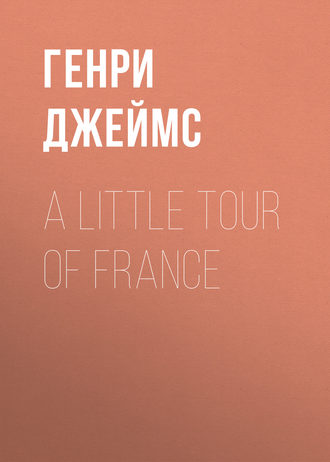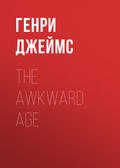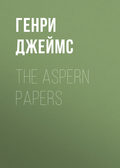
Генри Джеймс
A Little Tour of France
One The Church of Brou asks one's self how all this decoration, this luxury of fair and chiselled marble, survived the French Revolution. An hour of liberty in the choir of Brou would have been a carnival for the image-breakers. The well-fed Bressois are surely a good-natured people. I call them well-fed both on general and on particular grounds. Their province has the most savoury aroma, and I found an opportunity to test its reputation. I walked back into the town from the church (there was really nothing to be seen by the way), and as the hour of the midday breakfast had struck, directed my steps to the inn. The table d'hôte was going on, and a gracious, bustling, talkative landlady welcomed me. I had an excellent repast—the best repast possible—which consisted simply of boiled eggs and bread and butter. It was the quality of these simple ingredients that made the occasion memorable. The eggs were so good that I am ashamed to say how many of them I consumed. "La plus belle fille du monde," as the French proverb says, "ne peut donner que ce qu'elle a;" and it might seem that an egg which has succeeded in being fresh has done all that can reasonably be expected of it. But there was a bloom of punctuality, so to speak, about these eggs of Bourg, as if it had been the intention of the very hens themselves that they should be promptly served. "Nous sommes en Bresse, et le beurre n'est pas mauvais," the landlady said with a sort of dry coquetry, as she placed this article before me. It was the poetry of butter, and I ate a pound or two of it; after which I came away with a strange mixture of impressions of late gothic sculpture and thick tartines. I came away through the town, where, on a little green promenade, facing the hotel, is a bronze statue of Bichat the physiologist, who was a Bressois. I mention it not on account of its merit (though, as statues go, I don't remember that it is bad), but because I learned from it—my ignorance, doubtless, did me little honour—that Bichat had died at thirty years of age, and this revelation was almost agitating. To have done so much in so short a life was to be truly great. This reflection, which looks deplorably trite as I write it here, had the effect of eloquence as I uttered it for my own benefit on the bare little mall at Bourg.

Chapter xxxix
Beaune
ON my return to Macon I found myself fairly face to face with the fact that my tour was near its end. Dijon had been marked by fate as its farthest limit, and Dijon was close at hand. After that I was to drop the tourist and re-enter Paris as much as possible like a Parisian. Out of Paris the Parisian never loiters, and therefore it would be impossible for me to stop between Dijon and the capital. But I might be a tourist a few hours longer by stopping somewhere between Macon and Dijon. The question was where I should spend these hours. Where better, I asked myself (for reasons not now entirely clear to me), than at Beaune? On my way to this town I passed the stretch of the Côte d'Or, which, covered with a mellow autumn haze, with the sunshine shimmering through, looked indeed like a golden slope. One regards with a kind of awe the region in which the famous crûs of Burgundy (Vougeot, Chambertin, Nuits, Beaune) are, I was going to say, manufactured. Adieu, paniers; vendanges sont faites! The vintage was over; the shrunken russet fibres alone clung to their ugly stick. The horizon on the left of the road had a charm, however; there is something picturesque in the big, comfortable shoulders of the Côte. That delicate critic M. Emile Montégut, in a charming record of travel through this region published some years ago, praises Shakespeare for having talked (in "Lear") of "waterish Burgundy." Vinous Burgundy would surely be more to the point. I stopped at Beaune in pursuit of the picturesque, but I might almost have seen the little I discovered without stopping. It is a drowsy Burgundian town, very old and ripe, with crooked streets, vistas always oblique, and steep, moss covered roofs. The principal lion is the Hôpital-Saint-Esprit, or the Hôtel-Dieu simply, as they call it there, founded in 1443 by Nicholas Rollin, Chancellor of Burgundy. It is administered by the sisterhood of the Holy Ghost, and is one of the most venerable and stately of hospitals. The face it presents to the street is simple, but striking—a plain, windowless wall, surmounted by a vast slate roof, of almost mountainous steepness. Astride this roof sits a tall, slate-covered spire, from which, as I arrived, the prettiest chimes I ever heard (worse luck to them, as I will presently explain) were ringing. Over the door is a high, quaint canopy, without supports, with its vault painted blue and covered with gilded stars. (This, and indeed the whole building, have lately been restored, and its antiquity is quite of the spick-and-span order. But it is very delightful.) The treasure of the place is a precious picture—a Last Judgment, attributed equally to John van Eyck and Roger van der Weyden—given to the hospital in the fifteenth century by Nicholas Rollin aforesaid.
I learned, however, to my dismay, from a sympathising but inexorable concierge, that what remained to me of the time I had to spend at Beaune, between trains—I had rashly wasted half an hour of it in breakfasting at the station—was the one hour of the day (that of the dinner of the nuns; the picture is in their refectory) during which the treasure could not be shown. The purpose of the musical chimes to which I had so artlessly listened was to usher in this fruitless interval. The regulation was absolute, and my disappointment relative, as I have been happy to reflect since I "looked up" the picture. Crowe and Cavalcaselle assign it without hesitation to Roger van der Weyden, and give a weak little drawing of it in their "Flemish Painters." I learn from them also—what I was ignorant of—that Nicholas Rollin, Chancellor of Burgundy and founder of the establishment at Beaune, was the original of the worthy kneeling before the Virgin in the magnificent John van Eyck of the Salon Carré. All I could see was the court of the hospital and two or three rooms. The court, with its tall roofs, its pointed gables and spires, its wooden galleries, its ancient well, with an elaborate superstructure of wrought iron, is one of those places into which a sketcher ought to be let loose. It looked Flemish or English rather than French, and a splendid tidiness pervaded it. The porter took me into two rooms on the ground-floor, into which the sketcher should also be allowed to penetrate, for they made irresistible pictures. One of them, of great proportions, painted in elaborate "subjects" like a ball-room of the seventeenth century, was filled with the beds of patients, all draped in curtains of dark red cloth, the traditional uniform of these eleemosynary couches. Among them the sisters moved about in their robes of white flannel with big white linen hoods. The other room was a strange, immense apartment, lately restored with much splendour. It was of great length and height, had a painted and gilded barrel-roof, and one end of it—the one I was introduced to—appeared to serve as a chapel, as two white-robed sisters were on their knees before an altar. This was divided by red curtains from the larger part; but the porter lifted one of the curtains and showed me that the rest of it, a long, imposing vista, served as a ward lined with little red-draped beds. "C'est l'heure de la lecture," remarked my guide; and a group of convalescents—all the patients I saw were women—were gathered in the centre around a nun, the points of whose white hood nodded a little above them and whose gentle voice came to us faintly, with a little echo, down the high perspective. I know not what the good sister was reading—a dull book, I am afraid—but there was so much colour and such a fine, rich air of tradition about the whole place that it seemed to me I would have risked listening to her. I turned away, however, with that sense of defeat which is always irritating to the appreciative tourist, and pottered about Beaune rather vaguely for the rest of my hour: looked at the statue of Gaspard Monge, the mathematician, in the little place (there is no place in France too little to contain an effigy to a glorious son); at the fine old porch—completely despoiled at the Revolution—of the principal church; and even at the meagre treasures of a courageous but melancholy little museum, which has been arranged—part of it being the gift of a local collector—in a small hôtel de ville. I carried away from Beaune the impression of something mildly autumnal—something rusty yet kindly, like the taste of a sweet russet pear.

BEAUNE—THE HOSPITAL.

DIJON.

Chapter xl
Dijon
IT was very well that my little tour was to terminate at Dijon, for I found, rather to my chagrin, that there was not a great deal, from the pictorial point of view, to be done with Dijon. It was no great matter, for I held my proposition to have been by this time abundantly demonstrated—the proposition with which I started: that if Paris is France, France is by no means Paris. If Dijon was a good deal of a disappointment, I felt therefore that I could afford it. It was time for me to reflect, also, that for my disappointments, as a general thing, I had only myself to thank. They had too often been the consequence of arbitrary preconceptions produced by influences of which I had lost the trace. At any rate, I will say plumply that the ancient capital of Burgundy is wanting in character; it is not up to the mark. It is old and narrow and crooked, and it has been left pretty well to itself: but it is not high and overhanging; it is not, to the eye, what the Burgundian capital should be. It has some tortuous vistas, some mossy roofs, some bulging fronts, some grey-faced hotels, which look as if in former centuries—in the last, for instance, during the time of that delightful Président de Brosses whose Letters from Italy throw an interesting sidelight on Dijon—they had witnessed a considerable amount of good living. But there is nothing else. I speak as a man who, for some reason which he doesn't remember now, did not pay a visit to the celebrated Puits de Moïse, an ancient cistern embellished with a sculptured figure of the Hebrew lawgiver.
The ancient palace of the dukes of Burgundy, long since converted into an hôtel de ville, presents to a wide, clean court, paved with washed-looking stones, and to a small semicircular place, opposite, which looks as if it had tried to be symmetrical and had failed, a façade and two wings characterised by the stiffness, but not by the grand air, of the early part of the eighteenth century. It contains, however, a large and rich museum—a museum really worthy of a capital. The gem of this collection is the great banqueting hall of the old palace, one of the few features of the place that has not been essentially altered. Of great height, roofed with the old beams and cornices, it exhibits, filling one end, a colossal gothic chimney-piece with a fireplace large enough to roast, not an ox, but a herd of oxen. In the middle of this striking hall, the walls of which are covered with objects more or less precious, have been placed the tombs of Philippe-le-Hardi and Jean-sans-Peur. These monuments, very splendid in their general effect, have a limited interest. The limitation comes from the fact that we see them to-day in a transplanted and mutilated condition. Placed originally in a church which has disappeared from the face of the earth, demolished and dispersed at the Revolution, they have been reconstructed and restored out of fragments recovered and pieced together. The piecing has been beautifully done; it is covered with gilt and with brilliant paint; the whole result is most artistic. But the spell of the old mortuary figures is broken, and it will never work again. Meanwhile the monuments are immensely decorative.

DIJON—THE PARK.
I Dijon think the thing that pleased me best at Dijon was the little old Parc, a charming public garden, about a mile from the town, to which I walked by a long, straight autumnal avenue. It is a jardin français of the last century—a dear old place, with little blue-green perspectives and alleys and rond-points, in which everything balances. I went there late in the afternoon, without meeting a creature, though I had hoped I should meet the Président de Brosses. At the end of it was a little river that looked like a canal, and on the farther bank was an old-fashioned villa, close to the water, with a little French garden of its own. On the hither side was a bench, on which I seated myself, lingering a good while; for this was just the sort of place I like. It was the farthermost point of my little tour. I thought that over, as I sat there, on the eve of taking the express to Paris; and as the light faded in the Parc the vision of some of the things I had enjoyed became more distinct.






